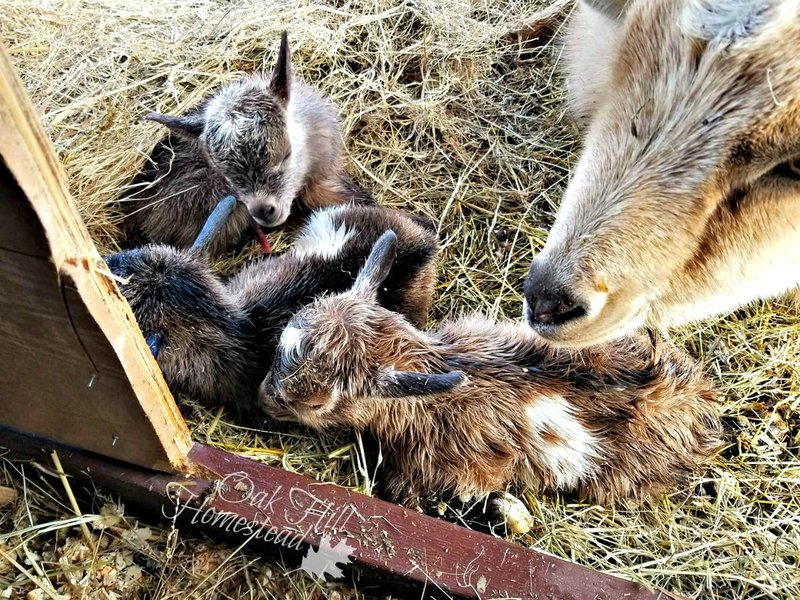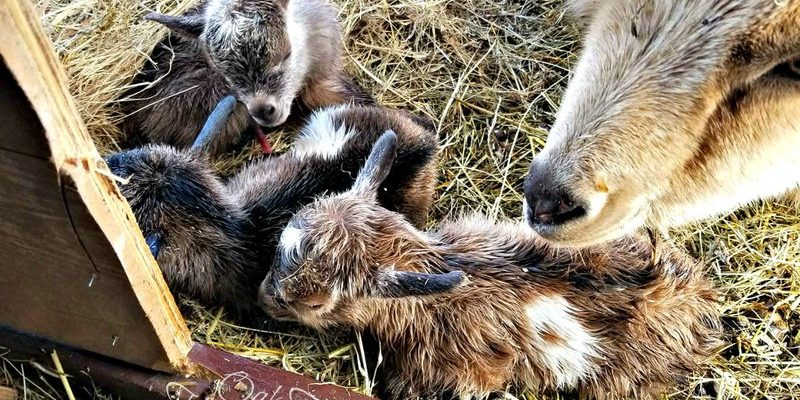
Breeding can be a bit of a rollercoaster ride—exciting but sometimes nerve-wracking too. It’s not just about having cute baby goats; it’s about understanding the whole process. From the moment a doe (the female goat) becomes pregnant to when she gives birth (or ‘kidding’), and then caring for the kids afterward, there’s a lot to consider. Think of it as a series of stages in a game, where each level requires different strategies and helps you create a thriving, happy goat family.
Understanding Gestation in Nigerian Dwarf Goats
Gestation is the period when a doe carries her kids, and for Nigerian Dwarf goats, this lasts about 150 days, though it can vary slightly. During this time, the doe undergoes several physical and emotional changes, similar to how humans might feel during pregnancy. She may become more affectionate or, conversely, a bit more reserved as she prepares for motherhood.
It’s important to ensure that your pregnant doe has a good diet rich in nutrients. High-quality hay, grains, and minerals are essential for her health and the development of healthy kids. Here’s a handy list of what to feed her:
- High-quality hay (timothy or alfalfa)
- Grain mix specifically formulated for pregnant does
- Mineral supplements, especially calcium and phosphorus
You might be wondering how to know if a doe is pregnant. Besides the obvious round belly, look for behavioral changes. She might become a bit more attached to her herd or display a change in appetite. Keeping track of her breeding dates will help you anticipate the big day—kidding!
Signs of Approaching Kidding
As your doe nears her due date, you’ll want to look out for certain signs that indicate she’s about to kid. About a week before she gives birth, a doe may start to exhibit restlessness. She might pace around her space, lie down and get back up frequently, or even seek out a quiet spot.
Another sign is the change in her milk. As she gets closer to kidding, you may notice her udder becoming full and tight—this is a good indicator that she’s ready to have her kids soon. Keep an eye on her behavior; she may also start to isolate herself from the rest of the herd as she prepares for the big event.
Finally, preparing a comfortable kidding area can make a big difference. A clean, dry space with plenty of straw will help your doe feel secure. Make sure it’s in a quiet part of your barn or yard, away from hustle and bustle.
The Kidding Process
When the moment finally arrives, the process can feel a bit frantic, but with a little prep and calmness, it can go smoothly. Here’s what typically happens during kidding:
1. Stage One: During this stage, your doe may show signs of discomfort. She might bleat or paw at the ground. This stage can last several hours as her body prepares for the birth.
2. Stage Two: This is when the actual delivery happens. You’ll want to be there to assist if needed, but often, goats manage just fine on their own. If you see any complications, like a kid coming out backward, it’s important to step in or contact a vet.
3. Stage Three: After all the kids are born, the placenta is expelled. Make sure to check that your doe passes it, as retaining it can cause health issues.
The whole process can be over in just a few hours, but it’s wise to keep an eye on your doe throughout.
Caring for Newborn Kids
Once the kids arrive, it’s an adorable whirlwind of activity. Newborn kids are often wobbly on their feet but super eager to stand and nurse. Within the first hour, it’s crucial for them to get their mother’s colostrum—the rich milk packed with antibodies.
Here’s how to care for the little ones:
– Ensure they nurse within the first hour. If a kid isn’t nursing, you may need to help by guiding them to their mom’s teat.
– Keep an eye on their health. Healthy kids are active, vocal, and should be gaining weight daily.
– Provide adequate shelter, keeping them warm and dry, especially if it’s chilly outside.
You might also want to think about whether you’ll bottle-feed any kids. Sometimes, especially if a mom has too many kids, bottle-feeding becomes necessary. Using a high-quality goat milk replacer can help ensure that they get the nutrition they need.
Socialization and Weaning of Kids
As your kids grow, socialization becomes essential. Nigerian Dwarf goats are social creatures, so they thrive in groups. If you can, keep them with their siblings or other friendly goats. This helps them develop the right behaviors and bond properly.
Weaning typically happens around 8 to 12 weeks of age. You can start to transition them off their mom’s milk by slowly introducing hay and grain. Here’s a simple process:
1. Start by offering hay and grain along with milk.
2. Gradually reduce the amount of milk over a few weeks.
3. Monitor their weight and behavior to ensure they adjust well.
After weaning, keep providing a balanced diet. Adult goats love grains, hay, and minerals, which will support their growth and health.
Health Considerations for Kids
Like any young animals, kids can face health issues. Keeping a close eye on them and ensuring they get the right vaccinations is vital. Some common health concerns include:
- Scours (diarrhea): Ensure they have access to clean water and a proper diet.
- Respiratory issues: Watch for coughing or nasal discharge, especially if there’s a change in weather.
- Internal parasites: Regular deworming is crucial to keep them healthy.
Regular vet check-ups can also spot potential problems early. Having a healthcare plan for your goats means you can enjoy raising them without too much worry.
Breeding Nigerian Dwarf goats is a rewarding adventure filled with cuddly kids and joyful moments. From the gestation period to the excitement of kidding and the care of those lively little goats, every step is an opportunity to learn and grow. Remember, the key is to stay observant and proactive about their needs. It might seem overwhelming at first, but with patience and practice, you’ll develop the skills to be a great goat parent. Enjoy the journey, because every moment spent with these charming creatures is a treasure!

